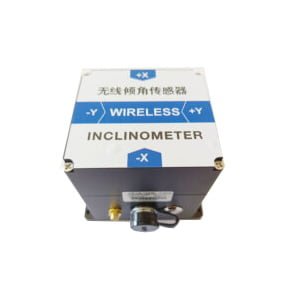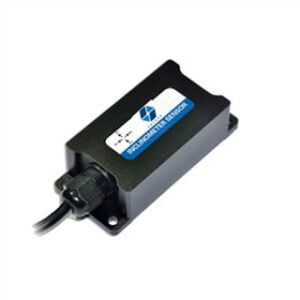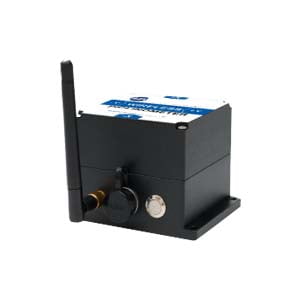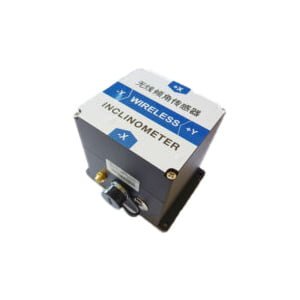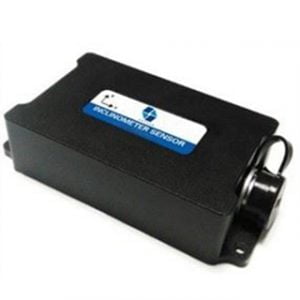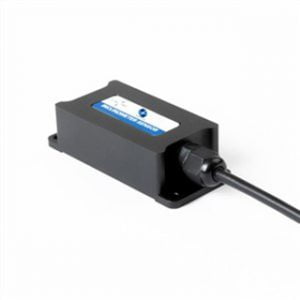Question 1: What is the resolution of a tilt sensor?
A: It refers to the smallest change to be measured that can be detected and distinguished by the tilt sensor within the measurement range.
Question 2: What is precision?
A: Accuracy refers to the actual angle and tilt sensor measurement angle multiple times (>24 times) root mean square value error of the measurement.
Question 3: How can the sensor be installed to ensure its best accuracy?
A: During installation, the sensor mounting surface should be kept parallel to the target of the measured surface, and the influence of dynamic and acceleration on the sensor should be reduced. The product can be installed horizontally or vertically, and the vertical installation is suitable for single-axis tilt sensor, which is suitable for measuring range < The 60-degree product is installed horizontally, and the front of the sensor is marked with X and Y direction indication stickers, which can be referred to when installing.
Question 4: What does offset mean in analog output sensors?
A: Zero bias voltage, if you customize the 0~5V output, then the zero position voltage output 2.5V.
Question 5: The larger the measurement range of the inclination sensor, does it determine the better and more expensive the product?
A: Can not be understood in this way, relatively speaking, the size of the range and the accuracy will be inversely proportional, the smaller the range, the higher the accuracy, the price is not directly related to the range.
Question 6: How can the visual value be less than the actual measured value (especially for the tilt alarm of the platform monitored by the tilt switch, the old-fashioned alarm)?
A: There may be an installation angle when the tilt switch is installed, and at this time, the tilt switch has an initial angle, so that the actual application will appear larger than the visual angle, and an alarm will occur.
Question 7: How can the visual angle of an electronic compass be greater than the measured angle?
Answer: Because the two axes of the inclination measurement are the most sensitive, when the inclination direction is not aligned with the measurement axis, the actual value will be greater than the measured value, which can also be understood as a projection.
Question 8: Which direction does the single-axis and dual-axis measurement of the tilt sensor refer to?
A: The double axis can measure the rollover (X direction) and pitch angle (Y direction), while the single axis can only measure the rollover angle or pitch angle when selecting the horizontal installation. If the single axis can only measure the rollover angle when selecting the vertical installation, the pitch angle is not optional.
Question 9: Do your products work well in harsh industrial environments?
A: At present, our products are used in various industrial control fields, including underground non-underground mining machinery, underwater machinery, Antarctic survey, oil drilling, etc., and the work is very stable.
Question 10: How to understand course accuracy?
A: The course accuracy refers to the root-mean-square error, not a random error, and to compensate for the influence of the surrounding static magnetic field, and the magnetic inclination should not be greater than 75 degrees of the value.
Question 11: In actual use, the electronic compass can not reach the nominal accuracy, especially in the measurement of the presence of pitch angle and roll angle.
A: Generally, the environment at the time of calibration is different from that at the time of use, so the calibration failure cannot guarantee the established indicators. If there is no tilt or roll in the rotation of the electronic compass during calibration, but there is a tilt and roll phenomenon in actual use, so this calibration is not effect.
Question 12: Axis alignment problem during installation of electronic compass?
A: The north point on the mounting surface of the electronic compass can be at a certain angle with the axis of the mounted body, which can be solidified into the memory body in the device through the setting software of the electronic compass for normal use to correct the output value.
Question 13: Electronic compass installation precautions?
A :1. In order to avoid strong magnetic interference, please be more than 0.5 meters away from the magnetic field source;
- If there is magnetic field interference of other supporting products around the installation, it is recommended to calibrate the device before using it. For details about the calibration method, see the calibration instructions in the product manual or consult technical support.
In Summary:
Question 5 we mentioned above: Does the larger the measurement range of the tilt sensor determine the better and more expensive the product?
A: Can not be understood in this way, relatively speaking, the size of the range and the accuracy will be inversely proportional, the smaller the range, the higher the accuracy, the price is not directly related to the range.
Let's take these two wireless tilt sensors as an example, the measuring range of ER-TS-12200-Modbus is ±30°, the measuring range is very small, but its accuracy reaches 0.001°. Small range but high precision.
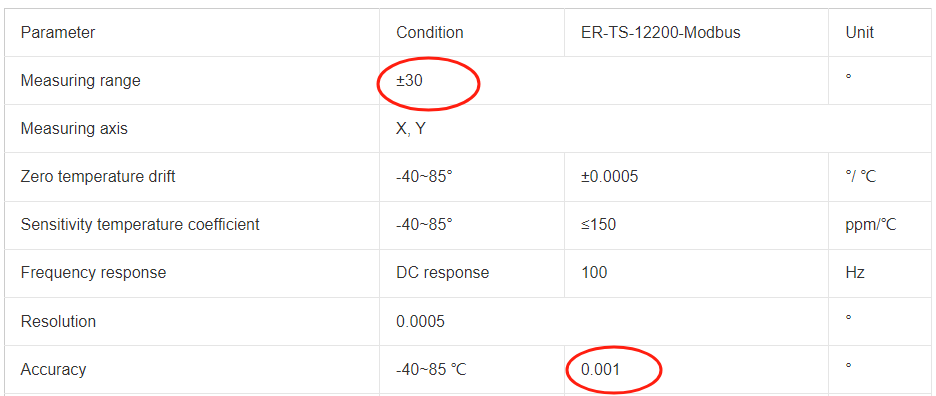
We use this product ER-TS-32600-Modbus for comparison. Its range is ±90°, which is larger than the above product, but its accuracy is only 0.01°. It can be seen that the range size and accuracy are indeed inversely proportional.
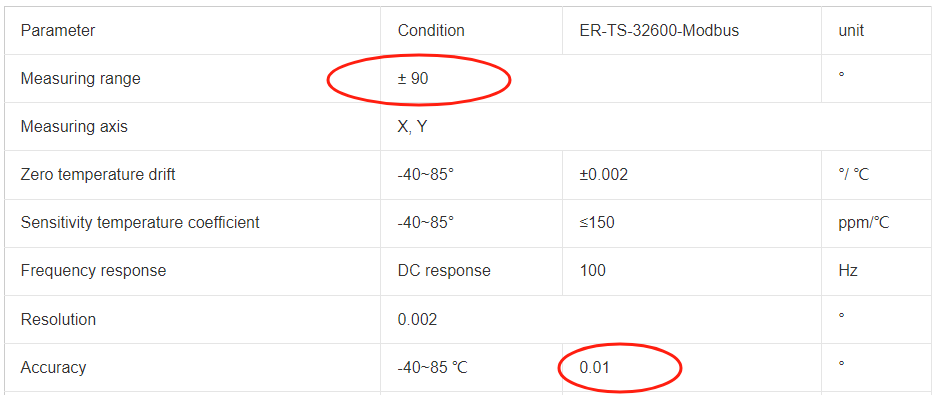
Customers in the use of the process may encounter some common problems, these problems are often consulted by customers in the past, in order to avoid causing unnecessary trouble to customers, Ericco listed here with the majority of customers and peers to share our experience.
More Technical Questions
1.Function and Test Analysis of Tilt Sensor Detection System
2.The Advantages and Disadvantages of the Transmission Mode of Tilt Sensor
3.Why are Tilt Sensors Important?
4.What is the Difference between Single, Double, Three axis in Tilt Sensor
5.What are the Advantages of Tilt Sensor
6.Is Tilt Sensor Analog or Digital?
Products in Article
